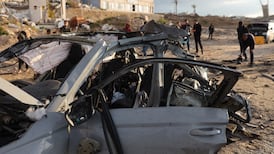Eyal was 26 when the army sapper first entered Gaza, sent in by prime minister Binyamin Netanyahu to help dismantle the extensive tunnels that Hamas had dug to hide its fighters and sneak into Israeli territory.
Nine years later, he is preparing for Netanyahu to send him back, to take down the militant group itself. This time, Eyal knows what awaits him and his comrades.
“A nightmare – except it’s real,” he said of entering the Palestinian territory controlled by Hamas since 2007. “Anything you touch could be a bomb, anyone you see could be a terrorist. You have to move slowly, deliberately. Sometimes they move faster than you can respond. The only thing that keeps you alive is your training.”
Israel’s expected invasion of the densely packed enclave is aimed at rooting out Hamas, whose fighters killed at least 1,200 Israeli civilians and soldiers in their assault on the Jewish state on Saturday, according to the Israeli government, and dragged back dozens of hostages. Palestinian authorities say that more than 1,200 people in Gaza have been killed by the Israel bombardment sparked by the incursion.
READ MORE
What awaits Israeli soldiers is “everything you can imagine and worse”, said Ehud Olmert, who as prime minister in 2008 sent ground troops into the 40km-long territory for the three-week Operation Cast Lead.
“It’s not going to be simple and it won’t be pleasant – for us or them,” he said. Given the clear intelligence failures that preceded Saturday’s attack, Israeli troops could be walking into “new shooters or new types of rockets that are stronger [and] bigger or new anti-tank rockets that we’re not familiar with”.
And unlike in the past, when Israel Defence Forces were sent in to achieve limited aims, Netanyahu is pledging complete victory over Hamas. It is a mission so complex and challenging that it is unclear how long it will take or how many lives – Israeli and Palestinian – it will cost.
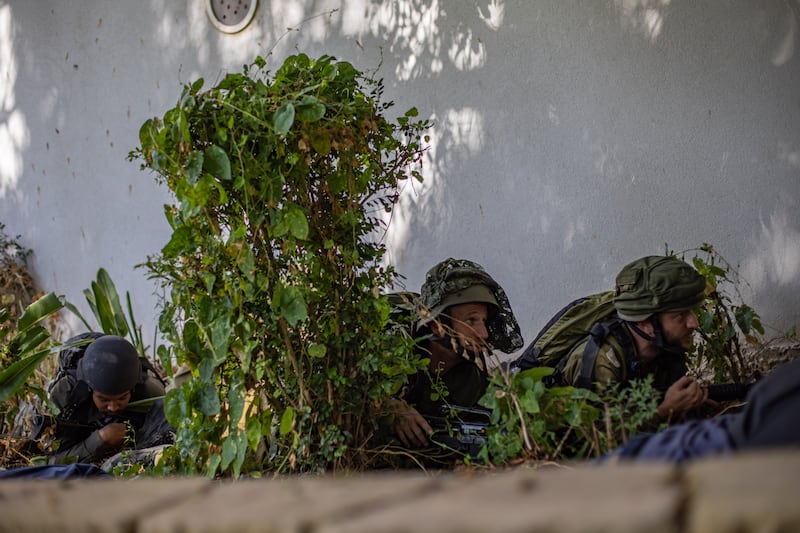
Hamas has amassed a formidable rocket arsenal since Israeli soldiers last entered Gaza in 2014. It has also built hundreds of kilometres of tunnels, nicknamed the “Gaza Metro”, to move fighters and weapons around undetected, and trained for urban combat.
Until Saturday’s shock attack, the Israelis Defence Forces (IDF) was convinced it was abreast of Hamas’s ruthless inventiveness, spending billions on sensors to detect underground movements and building a barrier to block tunnels from reaching into Israel.
Now, with 300,000 troops massed at Gaza’s border and Israel’s air force pounding Hamas targets, the IDF appears to be on the brink of a ground invasion unlike any since it moved into Lebanon in 1982 in an attempt to root out Palestinian militants and install a friendly government in Beirut.
“Hamas are very well prepared, but we also know that. And we’ve improved our tools and have been improving our methods,” said IDF spokesperson Maj Nir Dinar. “It’s double psychology. I know that they know, and they know that I know.”
At least 66 Israeli soldiers and six civilians died in the 2014 conflict. Among Palestinians, 2,133 people were killed of whom 1,489 were civilians, according to the UN. A further 500,000 people were displaced, as swathes of Gaza were turned into rubble.
The destruction and loss of life wrought by Israel’s bombardment and land offensive on Gaza, with Palestinian civilians trapped inside the impoverished strip, triggered international uproar that helped Hamas project an image of victory and remain in power.
The new war against Hamas, which Netanyahu has said would be “prolonged and painful”, will pit two competing methods of warfare against each other. It leaves Gazans bracing for an even more devastating onslaught this time; Israel has already laid siege to the strip, cutting water and electricity.

Israel’s army, the most powerful in the Middle East, will be fighting an enemy looking to exploit all the advantages of urban defence – from booby traps and sniper’s positions to reinforced strongholds – as well as an array of low-tech tactics to blunt Israel’s technological superiority.
The tunnel network had also deterred Israel from extensive ground operations inside Gaza, according to Shimon Arad, a retired IDF colonel.
Israel’s army will deploy its so-called “doctrine of victory”, which requires the air force to have a deep bank of pre-vetted targets destroyed in rapid order. It is already in play, with fighter jets intensely bombing large swathes of Gaza, pausing only to refuel, often in mid-air.
The campaign is meant to outpace the ability of Hamas to regroup and, according to a person familiar with the discussions that created the 2020 doctrine, to “achieve maximum goals before the international community puts political pressure to slow down”.
“It’s going to be very bloody,” said John Spencer, a former US major who chairs urban warfare studies at the Modern War Institute at The United States Military Academy, better known as West Point. “You can’t change the nature of urban warfare. There will be a lot of collateral damage.”
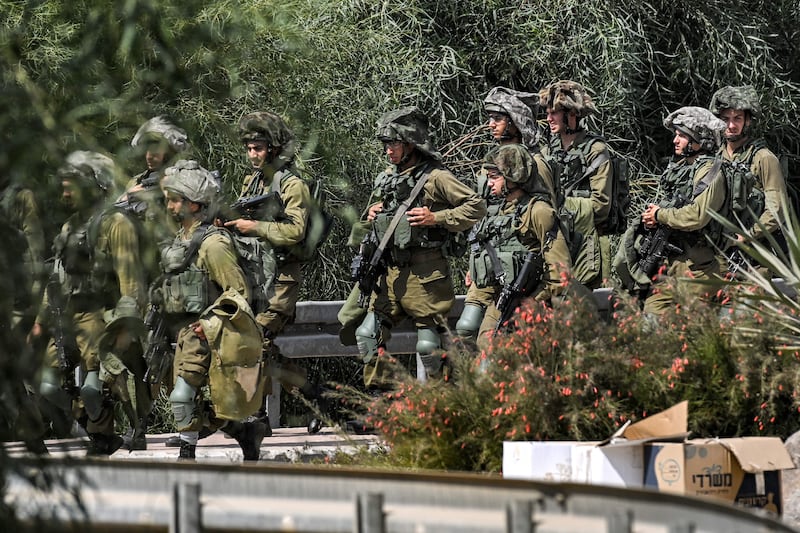
Israel has developed some of the world’s most advanced urban warfare training in preparation for such conflicts. Exercises take place at Baladia, a 5,000-acre facility in southern Israel built in 2005 to look like a typical Middle Eastern town, with 600 buildings, including mosques and a kasbah, arranged around narrow streets.
One military technique is to enter buildings by breaking through side walls to avoid booby trapped doors. Once inside, soldiers blast through interior walls to avoid any sniper fire on stairwells or open spaces on the street.
Another tactic is the use of three-storey-high armoured bulldozers to clear a path for units fighting on the ground.
Anthony King, professor of war studies at Exeter University and author of Urban War in the 21st century, said Israel’s probable first step would involve building what he described as “a layered cylinder of air power that rises 60,000ft above the fighting”.
“Micro-drones and attack helicopters will be at the lowest level, surveillance and kamikaze drones above them, then fighter jets and – at the very top – strategic reconnaissance aircraft. Moreover, they will all be linked,” King said.
“The next step will see armour driving through the streets, and artillery to blast a way through. It will be very destructive.”
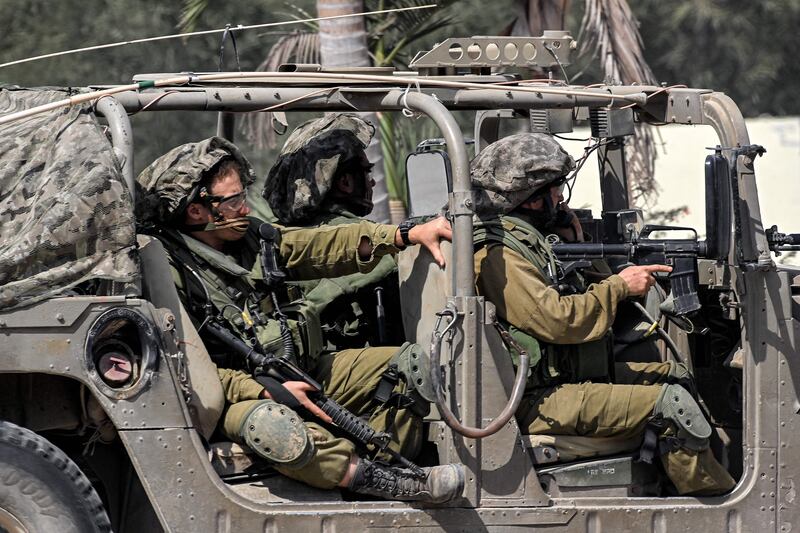
Before Israel’s forces can reach Hamas’s urban strongholds, they have to breach a series of defensive lines that will include mines, ambush sites and mortar targets, according to a recent review by Nadav Morag, a former Israeli security adviser.
Heavy mortars, machine guns, anti-tank weapons, snipers and possibly suicide bombers await on the outskirts of Gaza’s cities. Penetrating the tunnels will require intense close combat and the use of “sponge bombs”, a chemical compound that seals off small entrances.
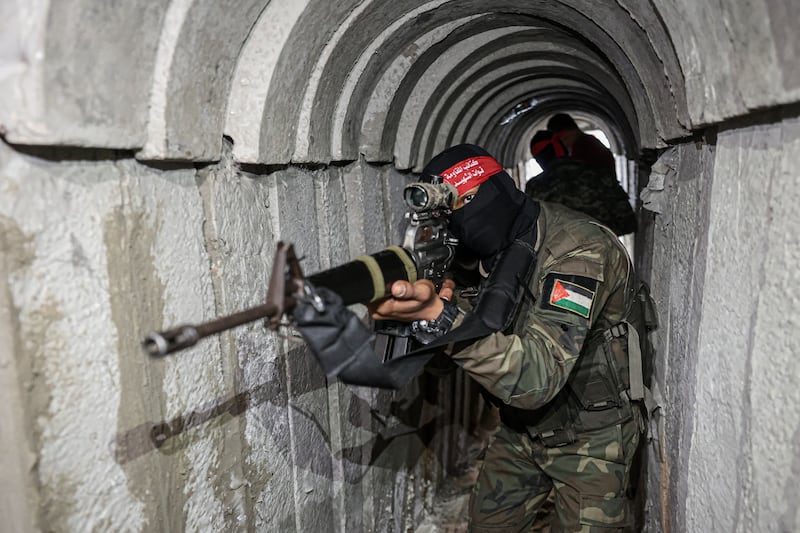
“It doesn’t destroy the tunnels, but it does allow troops to move on and not have to flush out enemy troops from every tunnel,” Spencer said.
Urban warfare, by its nature, is devastating. The battles for the city of Falluja after the 2003 US-led invasion of Iraq saw some of the fiercest fighting the Americans faced. Russian forces obliterated Ukraine cities, including Mariupol, with missile and artillery strikes in the early phase of its 2022 invasion.
Dismantling Hamas while rescuing the Israeli hostages and minimising civilian casualties will be a hugely complex – some would say impossible – mission for the IDF.
During the Israel-Hamas war in 2021, civilians were warned by leaflets, loudspeakers and telephone to evacuate battle areas before strikes were called in. But it did not always work as planned. Even when precision fire did take out enemy positions in one building, the defenders could move to another, until that was destroyed.
Former Israeli prime minister Olmert warned that Netanyahu and the IDF faced a moral quandary – using air power to attack Hamas increases the risk of civilian casualties, while using ground troops is more precise but increases the risk to Israeli soldiers.
“It boils down to one thing: are we prepared to take an action that will involve a great risk for Israeli soldiers, or will we choose a strategy that will cause a greater number of uninvolved people to be killed tragically,” he said.
“From what I know about Israeli public opinion right now, the push will be to take lesser risks.” – Copyright The Financial Times Limited 2023








